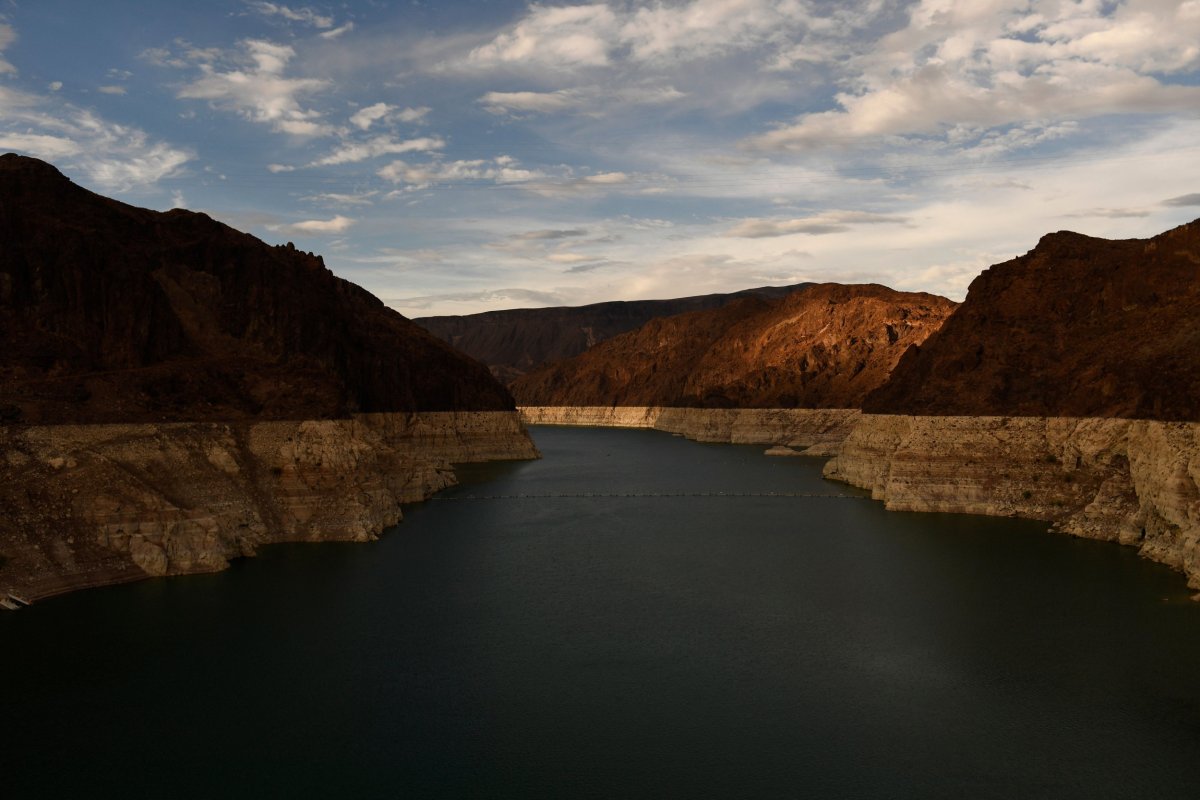A storm that buried parts of Colorado in more than 3 feet of snow this week brought good news for Lake Mead.
Lake Mead in Nevada and Arizona and Lake Powell in Utah and Arizona have suffered from drought for years, and excessive water usage is slowly depleting the Colorado River faster than natural weather patterns can fill it. An above-average snowfall and excessive precipitation last spring and this winter bolstered the water levels at Lake Mead, and the recent storm further improved the region's water outlook.
The snowstorm arrived on Wednesday and quickly became Denver's biggest of the season. Prior to the heavy fall this week, Denver's strongest snow-related storm produced 5.5 inches of snow in early February.

National Weather Service (NWS) meteorologist Bruno Rodriguez told Newsweek that amounts varied across the city as of Friday morning. Denver International Airport received about 5.7 inches of snow, but those totals went up to 2 feet in the western suburbs of Golden, Littleton and Lakewood. Areas like Evergreen, Colorado, received more than 3 feet of snow.
Read more: Plan Ahead for Emergencies
The storm improved the state's snowpack levels, particularly those in the Upper Colorado River Basin, which drains into Lake Mead. Before the storm, the basin had about 105 percent of its normal snowpack. After the storm, snowpack levels were 108 percent of normal, NWS Senior Service Hydrologist Aldris Strautins told Newsweek.
Although snowpack levels are above normal, they're still far behind last year's levels, which were about 142 percent of normal at this time. When the snowpack melted in the spring, it vastly improved Lake Mead's water levels.
Lake Mead water levels have slowly fallen since early March. As of Friday, the lake's water levels were at 1,075 feet—30 feet higher than this time last year.
Prior to the above-normal snowpack in 2023, the Upper Colorado River Basin had below-normal snowpack in 2022 and 2021, contributing to the region's water struggles. And although snowpack is above normal this year, since it's not comparable to 2023 levels, Lake Mead might rise at a slower pace during the April melt.
However, more snow could fall in Colorado before the winter season ends.
"We still have some time to continue to increase the snowpack," Strautins said, adding that the spring snowmelt typically begins at the start of April. "We can get storms that help with the water and snowpack all the way into May in the mountains, so there's still some potential."
Uncommon Knowledge
Newsweek is committed to challenging conventional wisdom and finding connections in the search for common ground.
Newsweek is committed to challenging conventional wisdom and finding connections in the search for common ground.
About the writer
Anna Skinner is a Newsweek senior reporter based in Indianapolis. Her focus is reporting on the climate, environment and weather ... Read more
To read how Newsweek uses AI as a newsroom tool, Click here.








